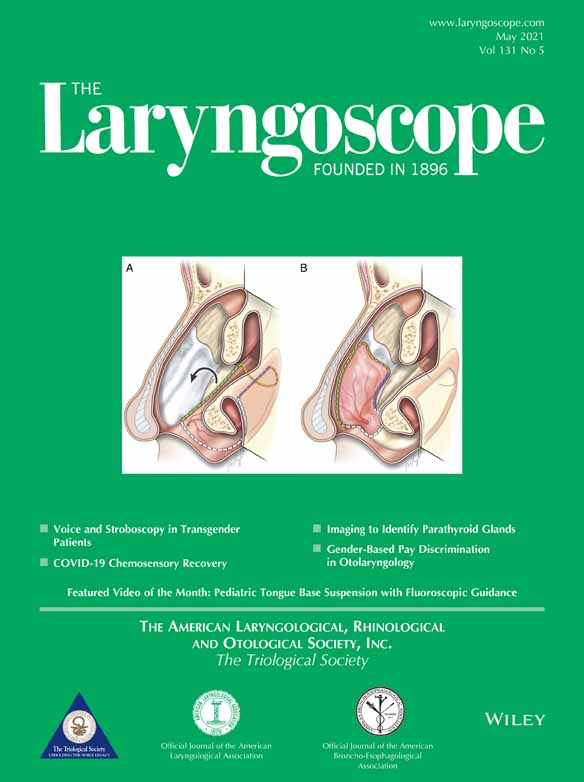Digital Otoscopy Videos Versus Composite Images: A Reader Study to Compare the Accuracy of ENT Physicians
Editor's Note: This Manuscript was accepted for publication on October 27, 2020
The project described was supported in part by Award R21 DC016972 (PIs: Gurcan, Moberly) from National Institute on Deafness and Other Communication Disorders. The content is solely the responsibility of the authors and does not necessarily represent the official views of the National Institute on Deafness and Other Communication Disorders or the National Institutes of Health.
Aaron C. Moberly, Garth Essig, and Charles Elmaraghy are shareholders in Otologic Technologies. Aaron C. Moberly and Metin N. Gurcan are paid consultants and serve on the Board of Directors for Otologic Technologies.
The authors have no other funding, financial relationships, or conflicts of interest to disclose.
Abstract
Objectives/Hypothesis
With the increasing emphasis on developing effective telemedicine approaches in Otolaryngology, this study explored whether a single composite image stitched from a digital otoscopy video provides acceptable diagnostic information to make an accurate diagnosis, as compared with that provided by the full video.
Study Design
Diagnostic survey analysis.
Methods
Five Ear, Nose, and Throat (ENT) physicians reviewed the same set of 78 digital otoscope eardrum videos from four eardrum conditions: normal, effusion, retraction, and tympanosclerosis, along with the composite images generated by a SelectStitch method that selectively uses video frames with computer-assisted selection, as well as a Stitch method that incorporates all the video frames. Participants provided a diagnosis for each item along with a rating of diagnostic confidence. Diagnostic accuracy for each pathology of SelectStitch was compared with accuracy when reviewing the entire video clip and when reviewing the Stitch image.
Results
There were no significant differences in diagnostic accuracy for physicians reviewing SelectStitch images and full video clips, but both provided better diagnostic accuracy than Stitch images. The inter-reader agreement was moderate.
Conclusions
Equal to using full video clips, composite images of eardrums generated by SelectStitch provided sufficient information for ENTs to make the correct diagnoses for most pathologies. These findings suggest that use of a composite eardrum image may be sufficient for telemedicine approaches to ear diagnosis, eliminating the need for storage and transmission of large video files, along with future applications for improved documentation in electronic medical record systems, patient/family counseling, and clinical training.
Level of Evidence
3 Laryngoscope, 131:E1668–E1676, 2021




